Managing Medical and Obstetric Emergencies and
Trauma:

Trauma:
Visit to download the full and correct content document: https://ebookmass.com/product/managing-medical-and-obstetric-emergencies-and-tr auma-a-practical-approach-4th-edition-rosamunde-burns-editor/

More products digital (pdf, epub, mobi) instant download maybe you interests ...

Organizational Ethics: A Practical Approach 4th Edition, (Ebook PDF)
https://ebookmass.com/product/organizational-ethics-a-practicalapproach-4th-edition-ebook-pdf/
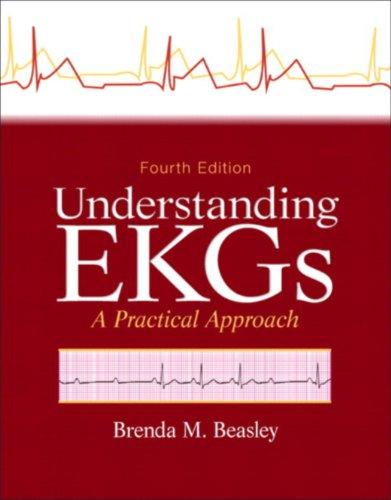
Understanding EKGs: A Practical Approach 4th Edition, (Ebook PDF)
https://ebookmass.com/product/understanding-ekgs-a-practicalapproach-4th-edition-ebook-pdf/
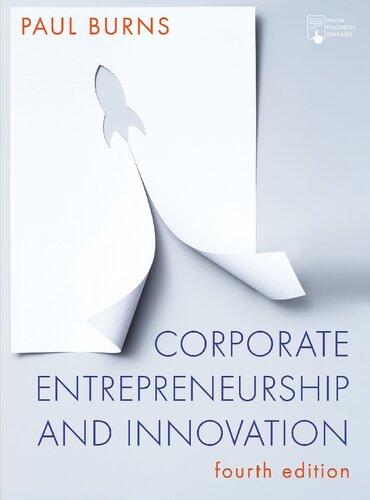
Corporate Entrepreneurship and Innovation 4th Edition
Paul Burns
https://ebookmass.com/product/corporate-entrepreneurship-andinnovation-4th-edition-paul-burns/

Managing and Using Information Systems: A Strategic Approach
https://ebookmass.com/product/managing-and-using-informationsystems-a-strategic-approach/

Pharmacotherapy Principles and Practice 4th
https://ebookmass.com/product/pharmacotherapy-principles-andpractice-4th-edition-marie-chisholm-burns/
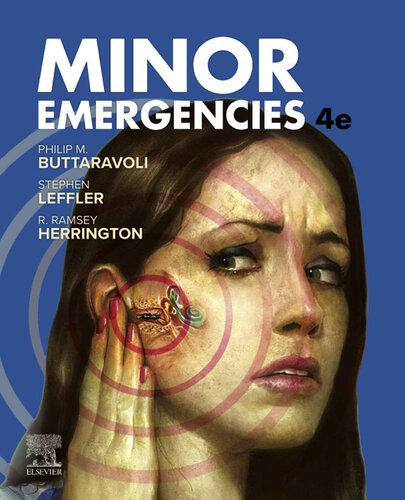
https://ebookmass.com/product/minor-emergencies-4th-editionphilip-m-buttaravoli/
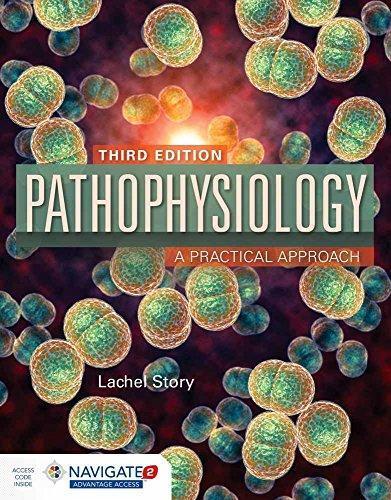
https://ebookmass.com/product/pathophysiology-a-practicalapproach-3rd-edition/
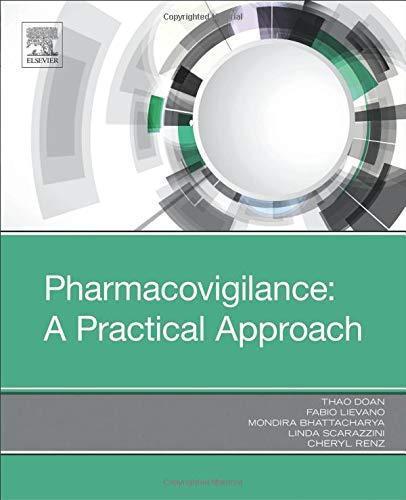
https://ebookmass.com/product/pharmacovigilance-a-practicalapproach-1st-edition/
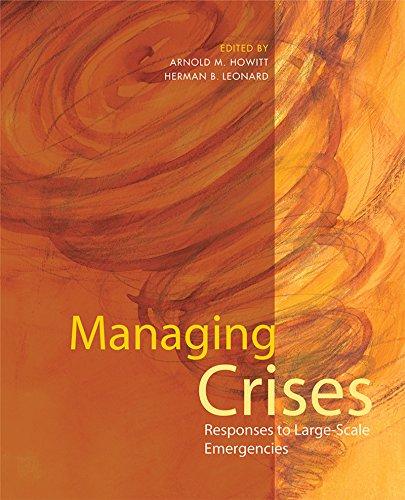
Managing Crises: Responses to Large-Scale Emergencies –Ebook PDF Version
https://ebookmass.com/product/managing-crises-responses-to-largescale-emergencies-ebook-pdf-version/

EDITED BY
Rosamunde Burns
Kara Dent
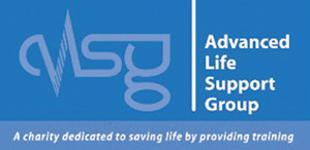
This fourth edition first published 2022
© 2022 John Wiley & Sons Ltd
Edition History
Cambridge University Press (3e, 2014, 2e 2007, 1e 2002)
All rights reserved. No part of this publication may be reproduced, stored in a retrieval system, or transmitted, in any form or by any means, electronic, mechanical, photocopying, recording or otherwise, except as permitted by law. Advice on how to obtain permission to reuse material from this title is available at http://www.wiley.com/go/permissions.
The right of Advanced Life Support Group (ALSG) to be identified as the authors of the editorial material in this work has been asserted in accordance with law.
Registered Offices
John Wiley & Sons, Inc., 111 River Street, Hoboken, NJ 07030, USA
John Wiley & Sons Ltd, The Atrium, Southern Gate, Chichester, West Sussex, PO19 8SQ, UK
Editorial Office
9600 Garsington Road, Oxford, OX4 2DQ, UK
For details of our global editorial offices, customer services, and more information about Wiley products visit us at www.wiley.com.
Wiley also publishes its books in a variety of electronic formats and by print- on- demand. Some content that appears in standard print versions of this book may not be available in other formats.
Limit of Liability/Disclaimer of Warranty
The contents of this work are intended to further general scientific research, understanding, and discussion only and are not intended and should not be relied upon as recommending or promoting scientific method, diagnosis, or treatment by physicians for any particular patient. In view of ongoing research, equipment modifications, changes in governmental regulations, and the constant flow of information relating to the use of medicines, equipment, and devices, the reader is urged to review and evaluate the information provided in the package insert or instructions for each medicine, equipment, or device for, among other things, any changes in the instructions or indication of usage and for added warnings and precautions. While the publisher and authors have used their best efforts in preparing this work, they make no representations or warranties with respect to the accuracy or completeness of the contents of this work and specifically disclaim all warranties, including without limitation any implied warranties of merchantability or fitness for a particular purpose. No warranty may be created or extended by sales representatives, written sales materials or promotional statements for this work. The fact that an organization, website, or product is referred to in this work as a citation and/or potential source of further information does not mean that the publisher and authors endorse the information or services the organization, website, or product may provide or recommendations it may make. This work is sold with the understanding that the publisher is not engaged in rendering professional services. The advice and strategies contained herein may not be suitable for your situation. You should consult with a specialist where appropriate. Further, readers should be aware that websites listed in this work may have changed or disappeared between when this work was written and when it is read. Neither the publisher nor authors shall be liable for any loss of profit or any other commercial damages, including but not limited to special, incidental, consequential, or other damages.
Library of Congress
Cataloging-in-Publication Data Applied for
Paperback ISBN: 9781119645740
Cover Design: Wiley
Cover Image: Courtesy of ALSG
Set in 10/12pt Myriad Light by Straive, Pondicherry, India
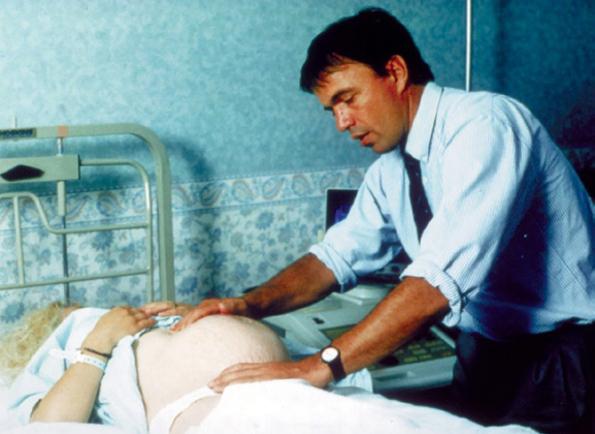
This book is dedicated to the memory of Richard Johanson, who died on 20 February 2002, before he could see this work come to fruition.
‘It’s never too late to be what you might have been’
This quotation had meaning for Richard – it was posted on his study wall.
Richard had two major aims in obstetrics – to avoid unnecessary intervention but to apply urgent skilled intervention when needed, and he had a gift for both. He wanted interventions to be based on the best evidence available and for there to be good audit to check that the correct processes were being followed. His experience in Stoke and overseas had given him the skills to achieve these aims. His drive was for simple emergency protocols to save the lives of mothers and babies. This led to his leadership in practice and education in labour ward emergencies.
Initially he organised structured training for life-threatening obstetric emergencies in the West Midlands and in 1997 he and Charles Cox were the inspiration for developing the ‘Managing Obstetric Emergencies and Trauma’ (MOET) course, aimed at senior obstetricians and anaesthetists. A modified MOET course was taken overseas where he introduced ideas and protocols with tact and efficiency.
He worked closely with midwives in research and in the implementation of labour ward guidelines. He organised national meetings dealing with childbirth and worked with the National Childbirth Trust and Baby Lifeline, again to promote safer childbirth without overmedicalisation. The foundation of his research charity ‘Childbirth without Fear’ aims to continue to improve the care of women during childbirth.
Richard will be remembered by many, particularly by his trainees. His boundless enthusiasm and generosity with his time, ideas and academic work meant that there was a queue to work with him. The publication problem would be solved and the trainee would have a nationally respected mentor who continued to take an interest in their career.
Perhaps instinctively feeling that time was precious led him to achieve so much so quickly. Much of it was due to the intellectual sparking between him and his anaesthetist wife, Charlotte. They demonstrated the teamwork that is part of the philosophy of MOET.
‘To see a human being reveal really exceptional qualities one must be able to observe his activities over many years. If these activities are completely unselfish; if the idea motivating them is unique in its magnanimity; if it is quite certain that they have never looked for any reward; and if in addition they have left visible traces on the world – then one may say, without fear of error, that one is in the presence of an unforgettable character.’
Anita Banerjee
Sam Bassett
Virginia A. Beckett
Janet Brennand
Rosamunde Burns
Alastair Campbell
Janie Collie
Christina Cotzias
Kara Dent
R. John Elton
Simon Grant
Marie Hall
Deborah Harrington
Brigid Hayden
Kim Hinshaw
Alison Lansbury
Douglas Mein
Oliver Milling-Smith
Felicity Plaat
FHEA FRCP, Obstetric Physician, Diabetes and Endocrinology and General Medicine Physician, Deputy Director of Medical Education, Guys and St Thomas’ Hospitals NHS Foundation Trust; Honorary Reader in Obstetric Medicine, King’s College London
Lead Midwife for Education and Head of Department Midwifery, King’s College London
BSc(Hons) MB BS FRCOG, Consultant Obstetrician and Gynaecologist, Bradford Teaching Hospitals NHS Foundation Trust
MD FRCOG, Consultant in Maternal and Fetal Medicine, Queen Elizabeth University Hospital, Glasgow
MBChB FRCA, Consultant Anaesthetist, Royal Infirmary of Edinburgh; Honorary Senior Lecturer, University of Edinburgh
BSc(Hons) MBChB FRCOG, Consultant Obstetrician and Gynaecologist, Royal Infirmary of Edinburgh; Associate Postgraduate Dean (Quality), NHS Education for Scotland
MB ChB FRCA, Consultant Anaesthetist, Assistant Director of Medical Education, University Hospital Crosshouse, Kilmarnock
MRCOG, Consultant Obstetrician and Gynaecologist, Chelsea and Westminster NHS Foundation Trust, West Middlesex Site
MBBS, FRCOG, Consultant in Fetal Maternal Medicine, University Hospitals of Derby and Burton Foundation Trust
FRCA, Consultant Obstetric Anaesthetist, University Hospitals of Coventry and Warwickshire NHS Trust, Coventry
DM FRCOG Consultant in Obstetrics and Fetal Medicine, North Bristol NHS Trust
RN RM MSc (critical care), Lead Midwife for Obstetric High Dependency, Queen Charlotte’s and Chelsea Hospital, Imperial College Healthcare NHS Trust
FRCOG, Consultant in Maternal and Fetal Medicine, Deputy Director of Medical Education, Oxford University Hospitals NHS Foundation Trust; Head of School of Obstetrics and Gynaecology, Health Education England working across the Thames Valley
FRCOG PGCTLCC DMCC, Consultant Obstetrician and Gynaecologist and Labour Ward Lead, Princess Elizabeth Hospital and Medical Specialist Group, Guernsey
FRCOG, Consultant Obstetrician and Gynaecologist, Sunderland Royal Hospital, South Tyneside and Sunderland NHS Foundation Trust; Visiting Professor, University of Sunderland
FRCA, Consultant Anaesthetist, Leeds General Infirmary
FRCA FANZCA, Consultant Anaesthetist, Wellington Regional Hospital, New Zealand
Consultant Obstetrician and Gynaecologist, Forth Valley Royal Hospital
BA MBBS FRCA, Consultant Anaesthetist, Queen Charlotte’s and Hammersmith Hospitals, Imperial College Healthcare NHS Trust, London
Rahul Sen BA FRANZCOG Grad Dip Ec DTM&H MIPH, Consultant in Obstetrics and Gynaecology, Royal Hospital for Women, Conjoint Lecturer, University of New South Wales, Sydney
Farah Sethna
Paul Sharpe
BSc(Hons) MBBS MRCOG FRANZCOG, Consultant in Obstetrics and Maternal and Fetal Medicine Centenary Hospital for Women and Children, Canberra, Australia
FRCA, Consultant in Obstetric Anaesthesia, University Hospitals of Leicester NHS Trust
Anouk van der Knijff- van Dortmont MD, Consultant Anaesthetist, Erasmus MC, Sophia Children’s Hospital University Medical Center Rotterdam, The Netherlands
Thierry van Dessel MD PhD, Consultant Obstetrics and Gynaecology, Elisabeth TweeSteden Hospital, Tilburg, The Netherlands
Darren Walter MPH FRCS FRCEM FIMC FAEMS, Senior Lecturer in Emergency Global Health, University of Manchester, Honorary Consultant in Emergency Medicine, Manchester University NHS Foundation Trust
Claire Alexander MPhil FRCOG, Consultant Obstetrician and Maternal Medicine Lead, Royal Infirmary of Edinburgh; Associate Postgraduate Dean, NHS Education Scotland
Anita Banerjee FHEA FRCP, Obstetric Physician, Diabetes and Endocrinology and General Medicine Physician, Deputy Director of Medical Education, Guys and St Thomas’ Hospitals NHS Foundation Trust; Honorary Reader in Obstetric Medicine, King’s College London
Virginia A. Beckett BSc(Hons) MB BS FRCOG, Consultant Obstetrician and Gynaecologist, Bradford Teaching Hospitals NHS Foundation Trust
Janet Brennand MD FRCOG, Consultant in Maternal and Fetal Medicine, Queen Elizabeth University Hospital, Glasgow
Rosamunde Burns MBChB FRCA, Consultant Anaesthetist, Royal Infirmary of Edinburgh; Honorary Senior Lecturer, University of Edinburgh
Malcolm Cameron MBChB MRCPsych, Consultant Liaison Psychiatrist, Crosshouse Hospital, NHS Ayrshire and Arran
Alastair Campbell BSc(Hons) MBChB FRCOG, Consultant Obstetrician and Gynaecologist, Royal Infirmary of Edinburgh; Associate Postgraduate Dean (Quality), NHS Education for Scotland
Janie Collie MB ChB FRCA, Consultant Anaesthetist, Assistant Director of Medical Education, University Hospital Crosshouse, Kilmarnock
Christina Cotzias MRCOG, Consultant Obstetrician and Gynaecologist, Chelsea and Westminster NHS Foundation Trust, West Middlesex Site
Kara Dent MBBS, FRCOG, Consultant in Fetal Maternal Medicine, University Hospitals of Derby and Burton Foundation Trust
R. John Elton FRCA, Consultant Obstetric Anaesthetist, University Hospitals of Coventry and Warwickshire NHS Trust, Coventry
Peter-Marc Fortune FRCPCH FFICM, Consultant Paediatric Intensivist, Associate Medical Director, Royal Manchester Children’s Hospital
Kyle Gibson MRCP FRCA FFICM, Specialty Trainee in Anaesthesia and Intensive Care Medicine, South East Scotland
Simon Grant DM FRCOG Consultant in Obstetrics and Fetal Medicine, North Bristol NHS Trust
Deborah Harrington FRCOG, Consultant in Maternal and Fetal Medicine, Deputy Director of Medical Education, Oxford University Hospitals NHS Foundation Trust; Head of School of Obstetrics and Gynaecology, Health Education England working across the Thames Valley
Brigid Hayden FRCOG PGCTLCC DMCC, Consultant Obstetrician and Gynaecologist, Labour Ward Lead, Princess Elizabeth Hospital and Medical Specialist Group, Guernsey
Bernhard Heidemann FRCA FFPMRCA, Consultant in Anaesthesia, Royal Infirmary of Edinburgh; Honorary Clinical Senior Lecturer, University of Edinburgh
Mark Hellaby MSc MEd PG Cert BSc(Hons) RODP FHEA, North West Simulation Education Network Manager, NHS Health Education England
Kim Hinshaw FRCOG, Consultant Obstetrician and Gynaecologist, Sunderland Royal Hospital, South Tyneside and Sunderland NHS Foundation Trust; Visiting Professor, University of Sunderland
Anjoke Huisjes Senior Consultant in Obstetrics and Gynaecology, Gelre ziekenhuizen, Apeldoorn, The Netherlands
Audrey Jeffrey FRCA, Consultant Anaesthetist, St John’s Hospital, Livingston
Dean Kerslake FRCP FRCEM EDIC FFICM, Consultant in Emergency Medicine and Critical Care, Clinical Director for Major Trauma, Royal Infirmary of Edinburgh
Marian Knight MA MBChB MPH DPhil FFPH FRCPE FRCOG, Professor of Maternal and Child Population Health, National Perinatal Epidemiology Unit (NPEU), Nuffield Department of Population Health, University of Oxford
Alison Lansbury FRCA, Consultant Anaesthetist, Leeds General Infirmary
Douglas Mein FRCA FANZCA, Consultant Anaesthetist, Wellington Regional Hospital, New Zealand
Judith Orme MBChB MRCPCH, Consultant in Neonatal Medicine, NHS Lothian University Hospitals Division
Sara Paterson-Brown FRCS FRCOG, Recently retired Obstetric Consultant, Queen Charlotte’s Hospital, Imperial College NHS Trust, London
Felicity Plaat BA MBBS FRCA, Consultant Anaesthetist, Queen Charlotte’s and Hammersmith Hospitals, Imperial College Healthcare NHS Trust, London
Farah Sethna BSc(Hons) MBBS MRCOG FRANZCOG, Consultant in Obstetrics and Maternal and Fetal Medicine, Centenary Hospital for Women and Children, Canberra, Australia
Gemma Sullivan MBChB MRCPCH PhD, Clinical Senior Lecturer, University of Edinburgh; Honorary Consultant in Neonatal Medicine, Royal Infirmary of Edinburgh
Kate Theodosiou MBChB FRCA, Consultant Anaesthetist and Airway Lead, Royal Infirmary of Edinburgh
Gill Tierney FRCS DM, Consultant Colorectal Surgeon, University Hospitals of Derby and Burton Foundation Trust; Vice-President of the Association of Surgeons of Great Britain and Ireland
Thierry van Dessel MD PhD, Consultant Obstetrics and Gynaecology, Elisabeth TweeSteden Hospital, Tilburg, The Netherlands
Darren Walter MPH FRCS FRCEM FIMC FAEMS, Senior Lecturer in Emergency Global Health, University of Manchester; Honorary Consultant in Emergency Medicine, Manchester University NHS Foundation Trust
Arlene Wise BSc (Hons) MBChB FRCA, Consultant Anaesthetist, Royal Infirmary of Edinburgh, NHS Lothian
Patrick H. Gibson BMBCh MD FRCP, Consultant Cardiologist, Western General Hospital and Royal Infirmary of Edinburgh
Jennifer Service
MBChB FRCA FFICM, Consultant in Anaesthesia and Critical Care, NHS Lothian
Sarah L. Stobbs BSc (hons), MBChB, MRCP, RCOA, Anaesthesia registrar, Royal Infirmary Edinburgh
Virginia Beckett
Alastair Campbell
Charles Cox
Johan Creemers
Kara Dent
R. John Elton
Diana Fothergill
Simon Grant
Brigid Hayden
Kim Hinshaw
Charlotte Howell
Shirin Irani
Geraldine Masson
Douglas Mein
Sara Paterson-Brown
Felicity Plaat
Bheemasenachar Prasad
Rahul Sen
Paul Sharpe
Contributors to third edition
Charles Cox Consultant Obstetrician and Gynaecologist, Wolverhampton
Johan Creemers Consultant Obstetrician and Gynaecologist, The Netherlands
James Drife Professor of Obstetrics and Gynaecology, Leeds
R. John Elton Consultant Anaesthetist, Coventry
Peter-Marc Fortune Paediatric Intensive Care, Manchester
Diana Fothergill Consultant Obstetrician and Gynaecologist, Sheffield
Simon Grant Consultant Obstetrician and Gynaecologist, Bristol
Brigid Hayden Consultant Obstetrician and Gynaecologist, Bolton
Carol Henshaw Consultant in Perinatal Mental Health, Liverpool
Kim Hinshaw Consultant Obstetrician and Gynaecologist, Sunderland
Charlotte Howell Consultant Anaesthetist, Stoke-on-Trent
Shirin Irani Consultant Obstetrician and Gynaecologist, Birmingham
Geraldine Masson Consultant Obstetrician and Gynaecologist, Stoke- on-Trent
Douglas Mein Consultant Anaesthetist, New Zealand
Jane Mooney Medical Editor, ALSG, Manchester
Fidelma O’Mahoney Consultant Obstetrician and Gynaecologist, Stoke- on-Trent
Sara Paterson-Brown Consultant Obstetrician and Gynaecologist, London
Simon Paterson-Brown Consultant General Surgeon, Edinburgh
Barbara Phillips Medical Editor, ALSG, Manchester
Felicity Plaat Consultant Anaesthetist, London
Bheemasenachar Prasad Consultant Anaesthetist, Perth, Australia
Rahul Sen Consultant Obstetrician and Gynaecologist, Australia
Paul Sharpe Consultant Anaesthetist, Leicester
Abdul Sultan Consultant Obstetrician and Gynaecologist, Croydon
Ranee Thaker Consultant Obstetrician and Gynaecologist, Croydon
Derek Tuffnell Consultant Obstetrician and Gynaecologist, Bradford
Sarah Vause Consultant Obstetrician and Gynaecologist, Manchester
J. Wardrope Consultant in Emergency Medicine, Sheffield
Sue Wieteska CEO, ALSG, Manchester
Jonathan Wyllie Consultant Neonatologist, Middlesbrough
Additional contributors to second edition
Kavita Goswami Consultant Obstetrician and Gynaecologist, Coventry
Kate Grady Consultant Anaesthetist, Manchester
Elaine Metcalfe ALSG, Manchester
Margaret Oates Consultant Perinatal Psychiatrist, Nottingham
Poonam Pradhan Consultant Obstetrician and Gynaecologist, Birmingham
Abdul Sultan Consultant Obstetrician and Gynaecologist, Croydon
Gargeswari Sunanda Consultant Obstetrician and Gynaecologist, Birmingham
Ranee Thaker Consultant Obstetrician and Gynaecologist, Croydon
Steve Walkinshaw Consultant in Fetomaternal Medicine, Liverpool
Catherine Wykes Consultant Obstetrician and Gynaecologist, Brighton
Additional contributors to first edition
The late Professor Richard Johanson
Nick Coleman Consultant Anaesthetist, Stoke- on-Trent
David Griffiths Consultant Obstetrician and Gynaecologist, Swindon
Mona Khadra Specialist Registrar in Obstetrics, John Radcliffe Hospital, Oxford
Harmini Sidhu Consultant Obstetrician and Gynaecologist, Craigavon
Peter Young Consultant Obstetrician and Gynaecologist, Stoke- on-Trent
There are few, if any, such polarised areas of clinical practice as obstetrics. The contrast between the magical beauty of normal pregnancy and childbirth and the often very rapidly progressive and terrifying emergency situation is extreme.
Being prepared for any eventuality is therefore the cornerstone of safe obstetric practice, and while this anticipation can help avoid a situation altogether, it can also enhance the likelihood of early recognition and damage limitation. In those absolutely unavoidable emergencies being well informed, prepared and practised can make the difference between life and death, or health and disability: this is reason enough for clinicians to go to every length to keep themselves informed, alert and vigilant.
This manual is a goldmine of information concerning the pathophysiology and management of emergencies concerning the pregnant (or recently pregnant) woman. It is practical, with useful tips and algorithms, as well as giving depth of knowledge with logical explanations to aid understanding. Whilst it forms part of the mMOET pre- course reading it also stands alone as an excellent text for all clinicians practicing in this specialty.
Don’t be unprepared: read, learn, practice and teach what is here, expect the unexpected, and you will keep women and their babies safe.
Sara Paterson-Brown FRCS FRCOG
We have the honour of participating in the miracle of birth and sharing the experiences of families worldwide, but with that honour comes the responsibility of keeping our women and babies safe.
MOET was the brainchild of passionate Obstetricians and Anaesthetists who recognised that, whilst our specialty is very rewarding, it carries high risk for some of our women. By training and studying together, we can improve our practice and their outcomes. Since 1997, through MOET, we have trained over 8380 clinicians and we have around 720 instructors. We have shared our approach worldwide by taking the course overseas to Liberia, Switzerland, Australia, the Netherlands and Iran, to name but a few.
Over the last 24 years, the course has naturally evolved, as has our specialty. In recognition of this, acknowledging the recent national changes in trauma management, as well as the increasing number of medical complexities that we are all seeing in our local units, MOET wanted to change too. By developing the trauma aspect and maternal medicine content, we hope to improve care delivered by Obstetricians and Anaesthetists working on the front line with our Midwifery colleagues.
Teaching around pre-eclampsia and haemorrhage has been prioritised over the last few decades and maternal death from these causes has fallen accordingly. Now we need to address the new medical complications and emergencies that we are all experiencing in our day-to-day working lives. Recent MBRRACE-UK reports reveal that cardiac disease, thromboembolism and neurological disease are now the three leading causes of maternal deaths. Subsequently, MOET became mMOET to acknowledge that we are ‘Managing Medical and Obstetric Emergencies and Trauma’ and to address these challenges.
We have worked with our colleagues in the emergency services and thoroughly rejuvenated the trauma content of the course. Being called to your ED in the middle of the night to a pregnant trauma victim can be daunting. We hope that this manual will help prepare you, to understand what your role is within the attending Trauma team and give you the confidence to acknowledge how you can contribute to the vital emergency care that the patient requires with your very specialised knowledge. If we can help give you the tools needed to address the next emergency you have to tackle, then we will have achieved what we set out to do.
To all the current and future generations of Obstetricians and Anaesthetists, we hope this manual and the mMOET course will inspire you to keep learning, to do your very best in some of the most difficult situations and to give our women and their babies the highest quality of care.
Kara
Dent and Rosamunde Burns May 2022
A great many people have put a lot of hard work into the production of this book and the accompanying course. The editors would like to thank all the contributors for their efforts and all the mMOET providers and instructors who took the time to send their comments during the development of the text and the course.
Some of the material used in this text is from other Advanced Life Support Group (ALSG) publications, in particular from the books Advanced Paediatric Life Support: The Practical Approach, Neonatal, Adult and Paediatric Safe Transfer and Retrieval: The Practical Approach and Major Incident Medical Management and Support: The Practical Approach in the Hospital
The chapters on resuscitation have been informed by the new international guidelines produced by an evidence-based process from the collaboration of many international experts under the umbrella of the International Liaison Committee on Resuscitation (ILCOR, 2020).
We would also like to thank members of our mMOET Trauma Review Group for all of their work in reviewing and updating the trauma section:
Rosamunde Burns MBChB FRCA, Consultant Anaesthetist, Royal Infirmary of Edinburgh; Honorary Senior Lecturer, University of Edinburgh
R. John Elton FRCA Consultant Obstetric Anaesthetist, University Hospitals of Coventry and Warwickshire NHS Trust, Coventry
Kyle Gibson MRCP FRCA FFICM, Specialty Trainee in Anaesthesia and Intensive Care Medicine, South East Scotland
Brigid Hayden FRCOG, PGCTLCC, DMCC Consultant Obstetrician and Gynaecologist, Labour Ward Lead, Princess Elizabeth Hospital and Medical Specialist Group, Guernsey
Audrey Jeffrey FRCA Consultant Anaesthetist, St John’s Hospital, Livingston
Dean Kerslake FRCP FRCEM EDIC FFICM, Consultant in Emergency Medicine and Critical Care. Clinical Director for Major Trauma, Royal Infirmary of Edinburgh
Darren Walter MPH FRCS FRCEM FIMC FAEMS Senior Lecturer in Emergency Global Health, University of Manchester, Honorary Consultant in Emergency Medicine, Manchester University NHS Foundation Trust
Arlene Wise FRCA Anaesthetic Consultant, NHS Lothian
We would like to thank Catherine Giaquinto for the algorithm design, and Helen Carruthers and Kate Wieteska for their work on many of the line drawings within the text. We would also like to thank the following organisations for the shared use of their figures, tables and algorithms:
Alma Medical
American Journal of Obstetrics and Gynecology
Arrow Association of Anaesthetists
COBIS
Difficult Airway Society (DAS)
Freelance Surgical
MBRRACE-UK
Northern Neonatal Network
Obstetric Anaesthetists’ Association (OAA)
Omega Healthcare
Resuscitation Council UK
Royal College of Physicians
Scottish Patient Safety Programme Maternity and Children Quality Improvement Programme
The American Civil Defense Association (TACDA)
VBM
Victoria Health
Wiley
World Health Organization
We also thank the BMJ for the Trauma Timeline, Laura May for the TRAUMATIC mnemonic, Tim Nutbeam and Ron Daniels on behalf of the UK Sepsis Trust, and Gareth Owens on behalf of the ‘Think Aorta’ Campaign for kindly sharing their resources.
We would like to thank, in advance, those of you who will attend the Managing Medical Obstetric Emergencies and Trauma (mMOET) course and others using this text for your continued constructive comments regarding the future development of both the course and the manual.
ALSG: www.alsg.org
For details on ALSG courses visit the website or contact:
Advanced Life Support Group
ALSG Centre for Training and Development
29–31 Ellesmere Street
Swinton, Manchester M27 0LA
Tel: +44 (0) 161 794 1999
Fax: +44 (0) 161 794 9111
Email: enquiries@alsg.org
The material contained within this book is updated on approximately a 4-yearly cycle. However, practice may change in the interim period. We will post any changes on the ALSG website, so we advise you to visit the website regularly to check for updates (www.alsg.org).
References
To access references visit the ALSG website www.alsg.org – references are on the course pages.
On-line feedback
It is important to ALSG that the contact with our providers continues after a course is completed. We now contact everyone 6 months after his or her course has taken place asking for on-line feedback on the course. This information is then used whenever the course is updated to ensure that the course provides optimum training to its participants.
Your textbook comes with free access to a Wiley E-Text: Powered by VitalSource version – a digital, interactive version of this textbook which you own as soon as you download it.
Your Wiley E-Text allows you to:
Search: Save time by finding terms and topics instantly in your book, your notes, even your whole library (once you’ve downloaded more textbooks)
Note and Highlight: Colour code, highlight and make digital notes right in the text so you can find them quickly and easily
Organise: Keep books, notes and class materials organised in folders inside the application
Share: Exchange notes and highlights with friends, classmates and study groups
Upgrade: Your textbook can be transferred when you need to change or upgrade computers
Link: Link directly from the page of your interactive textbook to all of the material contained on the companion website
The Wiley E-Text version will also allow you to copy and paste any photograph or illustration into assignments, presentations and your own notes.
To access your Wiley E-Text:
● Find the redemption code on the inside front cover of this book and carefully scratch away the top coating of the label.
● Go to https://online.vitalsource.co.uk and log in or create an account. Go to Redeem and enter your redemption code to add this book to your library.
● Or to download the Bookshelf application to your computer, tablet or mobile device go to www.vitalsource. com/ software/bookshelf/downloads.
● Open the Bookshelf application on your computer and register for an account.
● Follow the registration process and enter your redemption code to download your digital book.
● If you have purchased this title as an e-book, access to your Wiley E-Text is available with proof of purchase within 90 days. Visit http://support.wiley.com to request a redemption code via the ‘Live Chat’ or ‘Ask A Question’ tabs.
The VitalSource Bookshelf can now be used to view your Wiley E-Text on iOS, Android and Kindle Fire!
● For iOS: Visit the app store to download the VitalSource Bookshelf: http://bit.ly/17ib3XS
● For Android and Kindle Fire: Visit the Google Play Market to download the VitalSource Bookshelf: http://bit.ly/BSAAGP
You can now sign in with the email address and password you used when you created your VitalSource Bookshelf Account. Full E-Text support for mobile devices is available at: http://support.vitalsource.com
We hope you enjoy using your new textbook. Good luck with your studies!
95%CI 95% confidence interval
AAGA accidental awareness during general anaesthesia
ABG arterial blood gases
ACS acute coronary syndrome
ACVPU alert, new confusion, responds to voice, responds to pain, unconscious
AED automated external defibrillator
AFE amniotic fluid embolism
AIP abnormally invasive placenta
ALSG Advanced Life Support Group
ALSO Advanced Life Support in Obstetrics
ALT alanine aminotransferase
ARDS acute respiratory distress syndrome
AST aspartate aminotransferase
ATLS Advanced Trauma Life Support
BMI body mass index
BP blood pressure
BSOTS Birmingham Symptom-specific Obstetric Triage System
CEMACH Confidential Enquiry into Maternal and Child Health
CEMD Confidential Enquiry into Maternal Deaths
CESDI Confidential Enquiry into Stillbirths and Deaths in Infancy
CGM continuous glucose monitoring
CJD Creutzfeldt–Jakob disease
CMACE Centre for Maternal and Child Enquiries
CMDh Coordination Group for Mutual and Decentralised Procedures – human
CNS central nervous system
CO2 carbon dioxide
CPAP continuous positive airway pressure
CPD cephalopelvic disproportion
CPR cardiopulmonary resuscitation
CRP C-reactive protein
CRT capillary refill time
CS caesarean section
CSE combined spinal and epidural
CSF cerebrospinal fluid
CT computed tomography
CTG cardiotocography
CTPA computed tomography pulmonary angiography
CVP central venous pressure
CVT cerebral venous thrombosis
CXR chest x-ray
DAS Difficult Airway Society
DKA diabetic ketoacidosis
DVT deep vein thrombosis
EAS external anal sphincter
ECG electrocardiogram
ECMO extracorporeal membrane oxygenation
ECV external cephalic version
ED emergency department
eFAST extended focused assessment with sonography for trauma
ERCP endoscopic retrograde cholangiopancreatography
FAST focused assessment with sonography for trauma
FFP fresh frozen plasma
FRC functional residual capacity
GCS Glasgow Coma Scale
GIC Generic Instructor Course
GMC General Medical Council
GP general practioner
GTN glyceryl trinitrate
hCG human chorionic gonadotrophin
HDU high dependency unit
HELLP haemolysis, elevated liver enzymes, low platelet count (syndrome)
HIE hypoxic ischaemic encephalopathy
IAS internal anal sphincter
ICP intracranial cerebrospinal pressure
IgE immunoglobulin E
ILCOR International Liaison Committee on Resuscitation
IO intraosseous
ITU intensive treatment unit
IV intravenous
LDF leucocyte depletion filter
LMA laryngeal mask airway
LMWH low molecular weight heparin
MBRRACE-UK Mothers and Babies: Reducing Risk through Audits and Confidential Enquiries across the UK
MEOWS modified early obstetric warning score
MEWS maternity early warning scoring systems
MHRA Medicines and Healthcare products Regulatory Agency
MIMMS Major Incident Medical Management and Support
mMOET Managing Medical and Obstetric Emergencies and Trauma
MMR maternal mortality rate
MOH major obstetric haemorrhage
MRI magnetic resonance imaging
mRNA messenger RNA
MRV magnetic resonance venography
MSV Mauriceau–Smellie–Veit
MTS Manchester Triage System
MUD manual uterine displacement
NACCS Neuro Anaesthesia and Critical Care Society
NAP National Audit Project
NAPSTaR Neonatal, Adult and Paediatric Safe Transfer and Retrieval
NICE National Institute for Health and Care Excellence
NICU neonatal intensive care unit
NLS newborn life support
NNT number needed to treat
OAA Obstetric Anaesthetists’ Association
OASI obstetric anal sphincter injury
ONS Office for National Statistics
OR odds ratio
OVD operative vaginal delivery
PAST posterior axillary sling traction
PCI percutaneous coronary intervention
PDPH postdural puncture headache
PDS polydioxanone
PEA pulseless electrical activity
PEEP positive end- expiratory pressure
PEFR peak expiratory flow rate
PET pre- eclampsia toxaemia
PMCS perimortem caesarean section
PND postnatal depression
POCUS point of care ultrasound
PPH postpartum haemorrhage
PRES posterior reversible encephalopathy syndrome
qSOFA quick sequential organ failure assessment
RCoA Royal College of Anaesthetists
RCOG Royal College of Obstetricians and Gynaecologists
RCT randomised controlled trial
RCVS reversible cerebral vasoconstriction syndrome
Rh rhesus
ROSC return of spontaneous circulation
ROTEM® rotational thromboelastometry
RR respiratory rate
RR risk ratio
SAD supraglottic airway device
SAG-M saline-adenine- glucose-mannitol
SALVO Cell Salvage in Obstetrics (trial)
SAP systolic arterial pressure
SBAR situation, background, assessment and recommendation
SCAD spontaneous coronary artery dissection
SHO senior house officer
SSRI selective serotonin reuptake inhibitor
STEMI ST segment elevation myocardial infarction
SUDEP sudden unexpected death in epilepsy
SVT supraventricular tachycardia
tds ter die sumendum (three times a day)
TEG® thromboelastography
TFT thyroid function test
TIVA total intravenous anaesthesia
U&Es urea and electrolytes
UK United Kingdom
UKOSS UK Obstetric Surveillance System
USA United States of America
VAD ventricular assist device
VF ventricular fibrillation
V/Q ventilation/perfusion
VT ventricular tachycardia
VTE venous thromboembolism
WHO World Health Organization